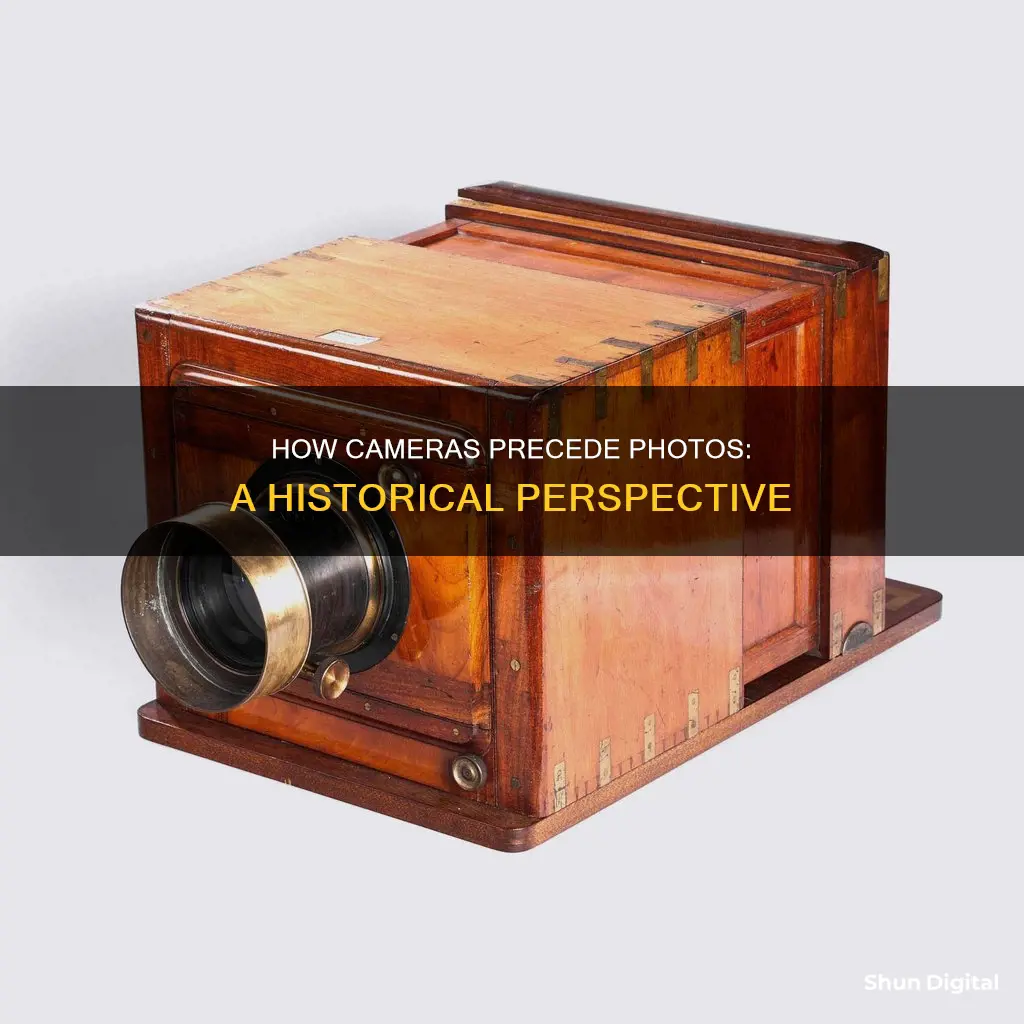
The history of the camera is a long one, dating back to the 5th century BCE when the basic concept of photography, or drawing with light, was first introduced. However, it wasn't until the 11th century when an Iraqi scientist developed the camera obscura that the art of photography was truly born. The camera obscura, which translates to dark room, is a natural optical phenomenon where a small aperture projects an inverted image onto a surface. Over the centuries, the camera obscura evolved from a pinhole in a tent to portable devices in tents and boxes that were commonly used for drawing by the late 17th century.
The first camera to take a permanent photograph was invented by French inventor Joseph Nicéphore Niépce in 1816, nearly a hundred years before the portable camera became available to the middle class. Niépce's camera used a light-sensitive material called Bitumen of Judea or Asphalt of Syria, a semi-solid oil, mixed with pewter. This allowed him to create a permanent image that would survive after the camera obscura was closed. He named his method heliography, which translates to sun drawing. The oldest surviving photograph, dated 1826, is a view from the window of his home in Le Gras, France.
Building on Niépce's work, Louis Daguerre continued to experiment and, in 1839, invented the daguerreotype, a mass-produced early form of photo camera. A daguerreotype uses a plate with a thin film of silver iodide that is exposed to light and then treated with mercury vapour and heated saltwater in the dark, removing any silver iodide unaltered by the light and leaving behind a fixed image. The daguerreotype was extremely popular, and the French government purchased the rights, presenting the technology as a free gift to the world.
The history of the camera has continued to evolve, with the introduction of roll film, instant cameras, digital cameras, and camera phones, leading to the high-tech mini-computers found in today's DSLRs and smartphones.
| Characteristics | Values |
|---|---|
| First camera | Invented in 1816 by Joseph Nicephore Niépce |
| First photograph | Taken by Joseph Nicephore Niépce in 1826 |
| First camera brand | Kodak, created by George Eastman in 1888 |
What You'll Learn

The camera obscura
In 1558, Giambattista della Porta was the first to write about using the camera obscura as a drawing aid in his popular and influential books. Della Porta's proposal was widely adopted by artists, and from the 17th century, portable versions of the camera obscura became commonly used, first as tents and later as boxes.
The box-type camera obscura formed the basis for the development of photographic cameras. In 1826, Joseph Nicéphore Niépce created the first permanent photograph of a natural scene using a camera obscura, projecting an image onto a bitumen-coated plate. This photograph, taken from the upstairs windows of his Burgundy estate, required an exposure of several hours and is now considered the world's first photograph.
Rechargeable Batteries for Fuji Cameras: What You Need to Know
You may want to see also

The first permanent photograph
Niépce used a process called heliography, which involved exposing a polished pewter plate coated with bitumen of Judea, a naturally occurring asphalt, to light. The plate was placed in a camera obscura, an optical device that projects an image of the outside scene onto a surface within a darkened room or box. After a long exposure of several days, the bitumen hardened in the brightly lit areas of the plate, while the dimly lit areas remained soluble. Niépce then used a solvent, such as lavender oil, to wash away the soluble parts, revealing a latent image on the plate.
The resulting photograph is a one-of-a-kind, permanent direct positive image on pewter. It measures 16.2 cm x 20.2 cm and is the earliest surviving photograph produced with the aid of a camera obscura. The original heliograph is now on permanent display at the Harry Ransom Center at the University of Texas at Austin, where it is considered one of the world's rarest treasures.
Maximizing Mirrorless Camera Battery Life: Top Tips to Consider
You may want to see also

The daguerreotype
The process involves treating a silver-plated sheet of copper with iodine vapour to give it a coating of light-sensitive silver iodide. After exposure in the camera, the image is developed by mercury vapour and fixed with a strong solution of ordinary salt (sodium chloride) or sodium thiosulfate. The daguerreotype is a direct-positive process, creating a highly detailed image without the use of a negative. The process required great care and a long exposure time, with the earliest daguerreotypes requiring exposure times of between three and fifteen minutes. However, modifications to the sensitisation process and improvements to photographic lenses reduced the exposure time to less than a minute.
The popularity of the daguerreotype declined in the late 1850s when new, less expensive, and faster photographic processes became available, such as the ambrotype. However, there has been a revival of the daguerreotype in recent years, with a small number of photographers choosing to use this early photographic process for artistic purposes.
Charging Cameras Off-Grid: Keep Your Camera Always Ready
You may want to see also

The calotype
In contrast, the calotype process was a developing-out process, in which only a faint or invisible latent image needed to be produced in the camera. This could be achieved in a minute or two if the subject was in bright sunlight. The paper was then removed from the camera and the latent image was chemically developed into a fully visible image.
The images produced by the calotype process were soft and hazy, with visible paper fibres. However, the invention revolutionised image-making by making it possible to produce multiple prints from a single negative image. The process remained in use through the 1850s, when it was replaced by the albumen silver print.
Lorex Cameras: Low-Battery Alerts and Notifications Explained
You may want to see also

The gelatin dry plate
In 1878, Charles Harper Bennett discovered that by heat-ripening a gelatin emulsion, its sensitivity could be greatly increased. This made so-called "instantaneous" snapshot exposures practical. For the first time, a tripod or other support was no longer an absolute necessity. With daylight and a fast plate or film, a small camera could be handheld while taking the picture. The ranks of amateur photographers swelled and informal "candid" portraits became popular.
Charging Pentax Cameras: A Quick Guide to Powering Your Device
You may want to see also
Frequently asked questions
Yes, the first camera, invented by Joseph Nicephore Niepce in 1816, predates the first photograph, which was taken in 1826.
The first camera was a simple wooden box with a lens on one side and a light-sensitive material on the other.
Niepce's camera used a technique called heliography, which involved coating a surface with bitumen (or asphalt) and exposing it to light for several hours. The bitumen hardened in proportion to the amount of light it received, and any unhardened bitumen could then be washed away with a solvent, leaving behind a permanent image.
The oldest surviving photograph, taken by Niepce in 1826, depicts the view from the window of his home in Le Gras, France. It shows a courtyard and outbuildings.
The exposure time for the first photograph was at least eight hours, and possibly several days.
Niepce continued to experiment with other materials and collaborated with Louis Daguerre, who eventually invented the daguerreotype, an early form of photo camera, in 1839. Daguerreotypes produced positive images and required shorter exposure times, making them more practical and popular than Niepce's heliography process.







